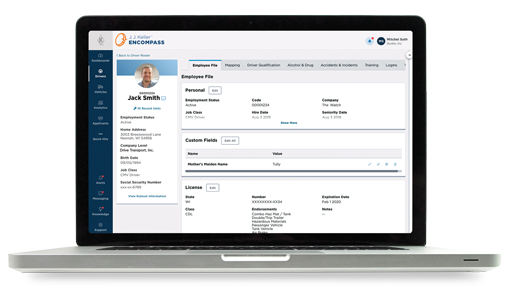Sr. Industry Business Advisor — J. J. Keller & Associates, Inc.
Yard Jockey Training Tips
Yard jockey, yard spotter, trailer jockey — call them what you will. Some jockeys move up to 100 trailers in a shift, making a strong case for training.
Published On: 07/01/2024


Written by:
Tom Bray
Yard jockey, yard spotter, trailer jockey, yard driver, yard hostler. Call them what you will, these are the employees that move trailers strictly to and from the loading docks. A yard jockey can move close to 100 trailers in a single shift using a terminal tractor (AKA yard dog, yard horse, and switch tractor). And that makes a strong case to conduct yard jockey training.
In many cases, these drivers do not operate on the public roadways, so they are not covered by the Department of Transportation (DOT) or Federal Motor Carrier Safety Administration (FMCSA) safety regulations. However, they are covered by the Occupational Safety and Health Administration (OSHA) safety regulations.
The goals are to get trailers moved and keep your employees safe. To do that, training should be conducted, even if the DOT and FMCSA regulations do not require it — both classroom instruction and practical application. Training needs to focus on the features and operation of the truck itself and also on conditions in the areas in which the terminal tractor will be used.
It Starts With an Inspection
Just like drivers of highway tractors, drivers of terminal tractors should start each day performing a pre-trip inspection on the terminal tractor they use. Terminal tractor inspection training needs to focus on key areas like:
- Tires,
- Brakes (including parking brake),
- Wheels,
- Steering system,
- Suspension system,
- Lights,
- Rims,
- Fluid levels, etc.
Any problems need to be reported to the service technician. Drivers should be taught to take a systematic approach to these inspections, so they are conducted in a thorough and consistent manner.
Training also needs to cover proper starting procedures and stress the need to check all gauges — oil pressure, coolant temperature, other warning lights — to make sure everything is in the normal operating range. Drivers also need to understand the importance of clean windows and windshields.
Basic Terminal Tractor Operating Techniques
The operator of a terminal tractor needs to be able to control both the speed and direction of the vehicle. Training should focus on proper acceleration, steering, backing procedures, and braking. Drivers need to be advised of yard speed limits. Trailers connected to terminal tractors with lifting fifth wheels are not stable, so drivers need to be reminded to avoid fast starts and fast turns. Yard drivers should also know your loading and unloading procedures and the indication that a trailer can be safely moved away from a dock.
There are safe ways to couple and uncouple trailers to a terminal tractor. The vehicle’s operating manual is a good place to start. However, there are some basic principles that apply when a driver is using a terminal tractor with a lifting fifth wheel, including:
- If the trailer is to be pulled away from a dock, verify loading/unloading is complete and no one is in the trailer,
- Making sure the fifth wheel is down before backing into the trailer,
- Ensure the fifth-wheel jaws are open or unlatched,
- Lining up the tractor and trailer,
- Backing the tractor under the trailer slowly until the fifth wheel is completely under the trailer,
- Raising the fifth wheel slightly so the landing gear is off the ground,
- Backing up until the king pin is locked into the fifth wheel (the fifth wheel is fully engaged), and
- Hooking up the brake lines to the trailer and raising the trailer to the travel position.
Avoiding Injuries And Accidents
Yard jockeys are susceptible to injuries from the landing gear and from climbing into and out of the vehicle. Training on how to safely crank the landing gear and on proper climbing techniques will go a long way toward reducing injuries. In addition, drivers need to be aware of all conditions in the yard, so they are prepared to respond to any hazards they may encounter.
Document Everything
It’s critical to document every aspect of training including materials used for training, training dates, attendance rosters, and instructors (and their qualifications). Not only does training reduce the risk of injury and accidents but documenting your training program substantiates your efforts to ensure a safe workplace. The Encompass® Fleet Management System provides centralized storage and tracking of all training details and documentation, and provides customizable fields and reporting. Documentation stored within the cloud platform can be easily shared via email or through multi-user, credentialed access to the platform.
Simplify DOT Recordkeeping with Encompass
The Encompass® System provides centralized storage and tracking of all training details and documentation, and provides customizable fields and reporting. Documentation stored within the cloud platform can be easily shared via email or through multi-user, credentialed access to the platform. Learn more.
You may also enjoy the following articles:
Sign up for our newsletter!
We'll help you stay on top of regulations, best practices, and fleet industry news. Sign up to receive a monthly email notification with links to our most recent blog articles, free resources, and event invites.
